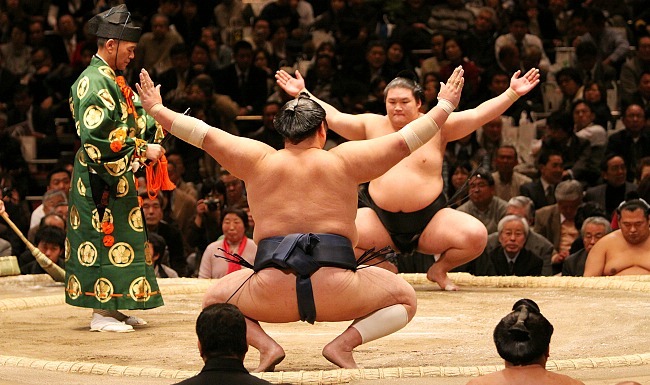
photo by japan-guide.com
Sumo wrestling is the national sport in Japan. Same as watching other sports such as soccer or baseball, watching live Sumo wrestling at the stadium is far more thrilling thus immersive, than just watching it on TV. But in reality, most people, including Japanese people, think going out to watch Sumo is something they would rather shrink back from. But once you experience it, it will open the door to somewhere very different! This column will introduce Sumo watching at the Kokugikan Sumo Stadium (the Kokugikan) in Ryogoku, the home of Sumo wrestling.
What is Sumo?
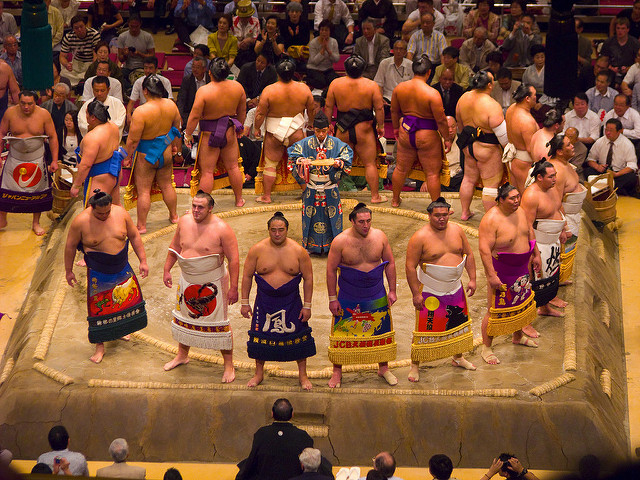
photo by Better Than Bacon
The origin of sumo, a part of the traditional culture of Japan, can be traced back to the age of the gods, the time of Japanese mythology. Afterward, people started performing Sumo as a part of a ceremony to forecast the harvest of the year during an annual festival. Before the style of Sumo wrestling was formed almost same as it is today during the Edo period, it had been accepted as an imperial event of seasons. Performed by professional Sumo wrestlers, it rapidly became everyone’s casual entertainment along with Kabuki. It was gradually formed into a configured modern sport and the rules were set up. It is now attracting a great international attention as a unique culture of Japan.
The rules of Sumo wrestling
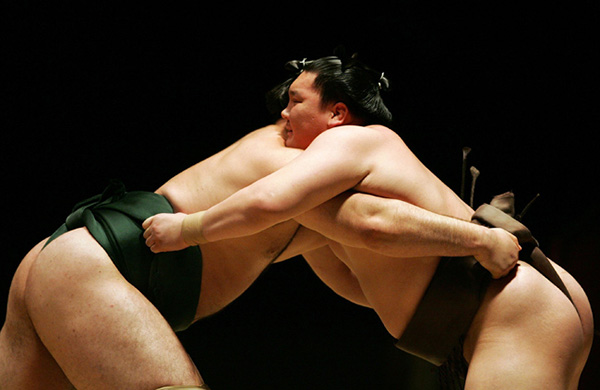
photo by LAROZARCHER
It is quite simple. Sumo wrestlers are called “Rikishi” and a bout is called “torikumi”. Two Sumo wrestlers who wears only a belt, wrestle inside the ring called “dohyo”. Either of them loses if he first steps out of the ring, touches the ground with any part of his body other than the bottom of his feet, or violates the rules. Bouts are judged by a referee called “gyoji” and end within a minute most of the time. Professional Sumo tournaments called “hon-basho” take place six times each year: three in Tokyo, one each in Osaka, Nagoya and Kyushu. What matters in sumo wrestling is a total strength of “mind, skills and body” which cannot be simply measured by wrestlers’ body size. Therefore there is no weight class in Sumo that is adopted in other sports such as professional boxing. Sumo wrestling is an international entertainment with straightforward rules that anyone can enjoy.
Buying tickets
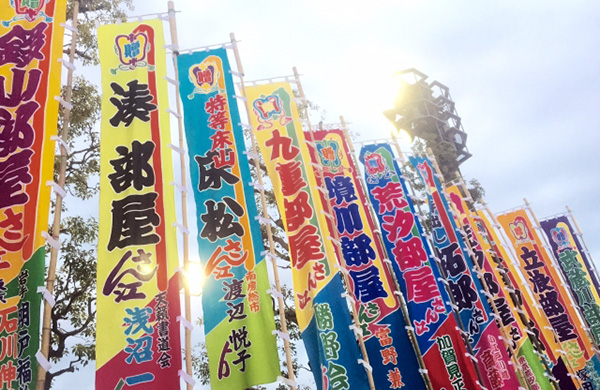
Sumo tournaments are held at the Kokugikan in Ryogoku, Tokyo, three times each year: in January, May and September. Tickets can be purchased from the Japan Sumo Association website, Pia (ticketing agent), or at the Kokugikan box office. There are three types of seats: “tamari” seats, box seats, and arena seats, in order of closest to the ring. “Tamari” seats are right beside the ring therefore extremely popular, and box seats is for four people to squash in a small square. If you like to spare some room around you, an arena seat is for you. Many of foreign tourists seems to choose arena seats. Also, farthest seats on 2nd floor are general admission seats. The box office opens at 8:00 in the morning but a long queue is expected just to get numbered dockets. Earlier booking is strongly recommended. If you wish to buy general admission tickets, allow plenty of time before you queue up at the box office.
Etiquette tips for a Sumo tournament spectators
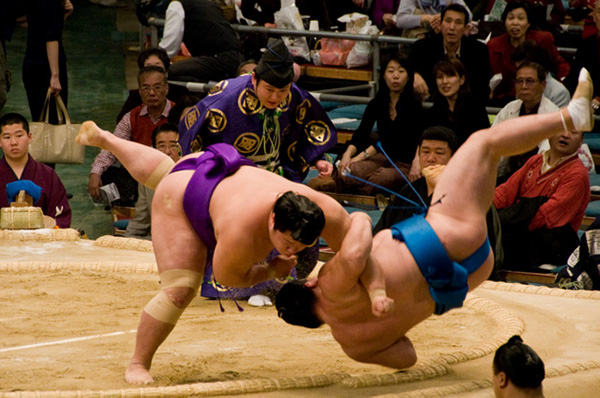
photo by jasondunn.com
There is no strict rules to watch a sumo tournament from box seats and arena seats. You are allowed to leave your seat, enjoy drink or food on the seat, and take photos from your seat. However, there are some etiquette tips for people on these seats such as: stay seating during ongoing bouts and not blocking others’ sight with things like a huge hat or headgear. Also you are not supposed to throw a cushion, but this happens occasionally when “yokozuna” loses the match against a lower ranked wrestler. There is no dress code so you can come in whatever outfit.
Note that you must follow some rules only if you are sitting on “tamari” seats. You are not allowed to eat, drink, take photos or use a mobile phone on “tamari” seat as you are right beside the ring; you often get into the pictures when broadcasted on TV. In addition, the pathway from the side gate of Kokugikan to the rikishi’s waiting room are normally filled with fans waiting for their favorite wrestlers passing by. This is a great chance to take photos of sumo wrestlers, however, refrain from trying to touch them or talk to them. This is very important moment for them to increase their concentration for an upcoming bout.
Schedule of the day during “hon-basho”
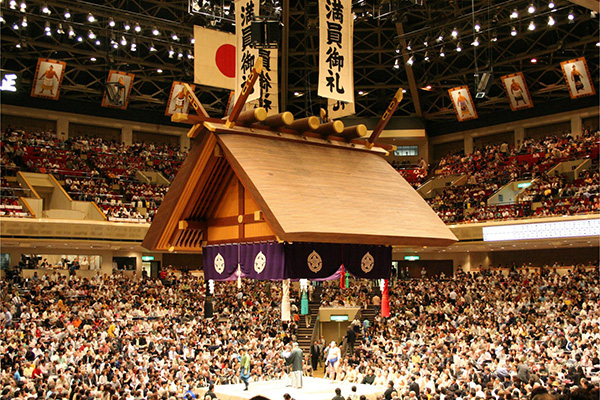
A live broadcasst of sumo starts only from late afternoon, however, daily sumo bouts commence in the morning throughout “hon-basho”. Therefore watching live sumo at the stadium can be an all-day activity. The following is a schedule of the day at the Kokugikan.
8:30 (approx.) Bouts by “jonokuchi” and “makushita”
A day starts with bouts of wrestlers in lower divisions.
14:15 (approx.) The ring-entering ceremony and bouts by “juryo”
“Juryo”, who are recognized as fully-fledged sumo wrestlers, enter in the ring and commence their bouts.
15:40 (approx.) The entry of “makuuchi”
Star wrestlers wearing an embroidered apron enter and walk around the ring.
16:00 (approx.) The entry of “yokozuna”
People cheers when “yokozuna”, who is very well worked up, stamps his feet.
16:10 (approx.) Bouts by “makuuchi”
Wrestlers who you normally see on TV commence their exciting bouts.
18:00 (approx.) Final bout of the day and the bow-twirling ceremony
After a final bout of the day finishes, a “makushita” wrestler receives a bow from the referee and performs a ceremonial dance.
Morning sessions do not attract much attention and the venue is normally almost empty. People seem to start coming just before the entry of “juryo” about 14:15. There are many things to see as well as cafes and canteens. Spare some time before bouts start and enjoy touring inside the Sumo sanctuary.
【Bonus cut】Exploring inside the Kokugikan Sumo Stadium
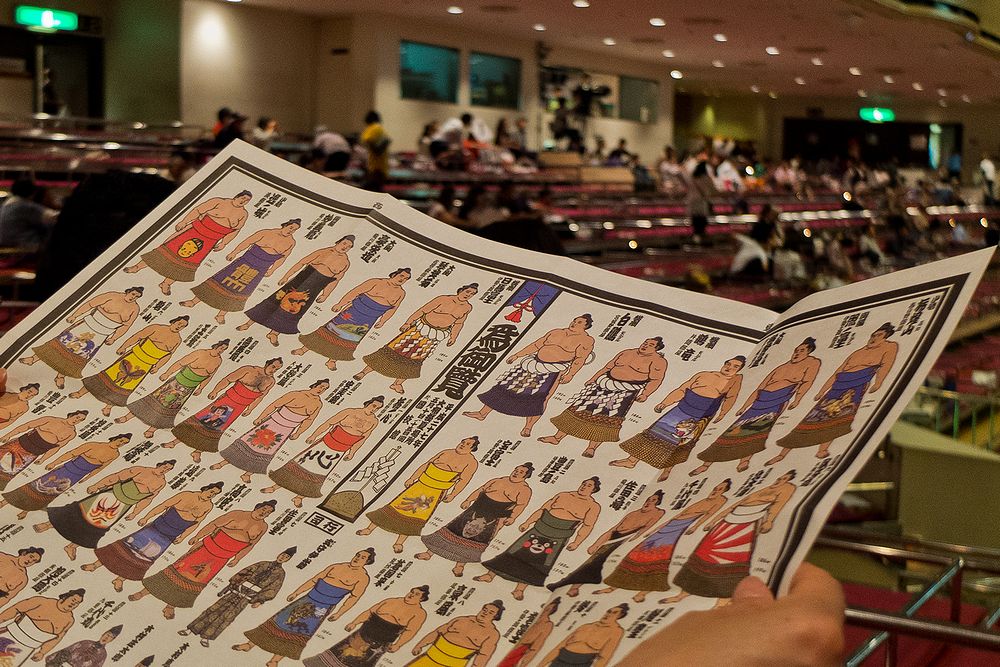
photo by nandakadays
The first floor of Ryogoku Kokugikan operates as a museum and exhibits woodblock prints of sumo wrestlers, embroidered aprons, “banzuke” ranking board and more. Also there are food stalls and a restaurant in Kokugikan. Visitors can enjoy lunch sets or fried noodles at Japanese restaurant “Raiden”, or purchase “bento” lunch boxes named after sumo wrestlers. “Kokugikan yakitori”, grilled chicken marinated in special sauce, is must-eat menu here. If you feel like a dessert, have ice-cream at “Kokugikan café”. Kiosk is filled with little items such as miniature wrestler straps, tea cups, handkerchiefs and more. Sumo wrestler chocolate is always there if you cannot pick right one. A box of chocolates in shapes of “yokozuna”,”rikishi”, “gyoji” and “yobidashi” is very popular among tourists from overseas. A pictured wrestles guide is also popular. Pictures of wrestlers are very well portrayed in details such as wrestlers’ embroidered aprons.
It’s time, both hands down
In recent years, more people from overseas are visiting the Kokugikan Sumo Stadium. Don’t warry if you understand only little Japanese. There are brochures in English and ranking charts written with alphabets. Have “chanko-nabe”, a typical meal of sumo wrestlers, for dinner after watching sumo at the Kokugikan. There is even a shop that has a sumo ring inside. Chatting with your friends about great sumo tournament while you enjoy soul food of sumo wrestlers will be an unforgettable experience.
Related Article:
First-timers guide to watching Kabuki at the Kabukiza Theatre

One thought on “Beginners guide to watch Sumo at the Kokugikan Sumo Stadium”